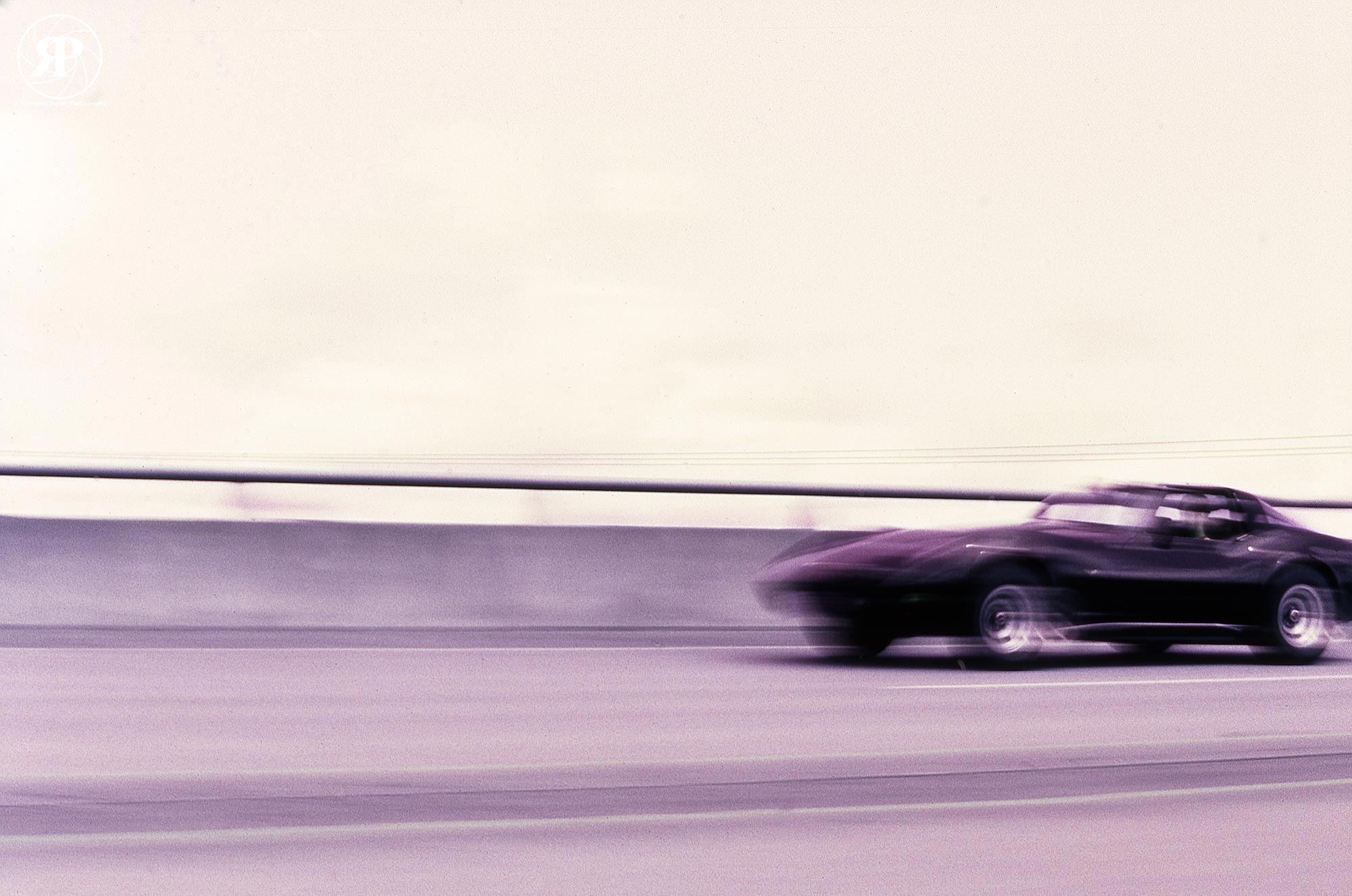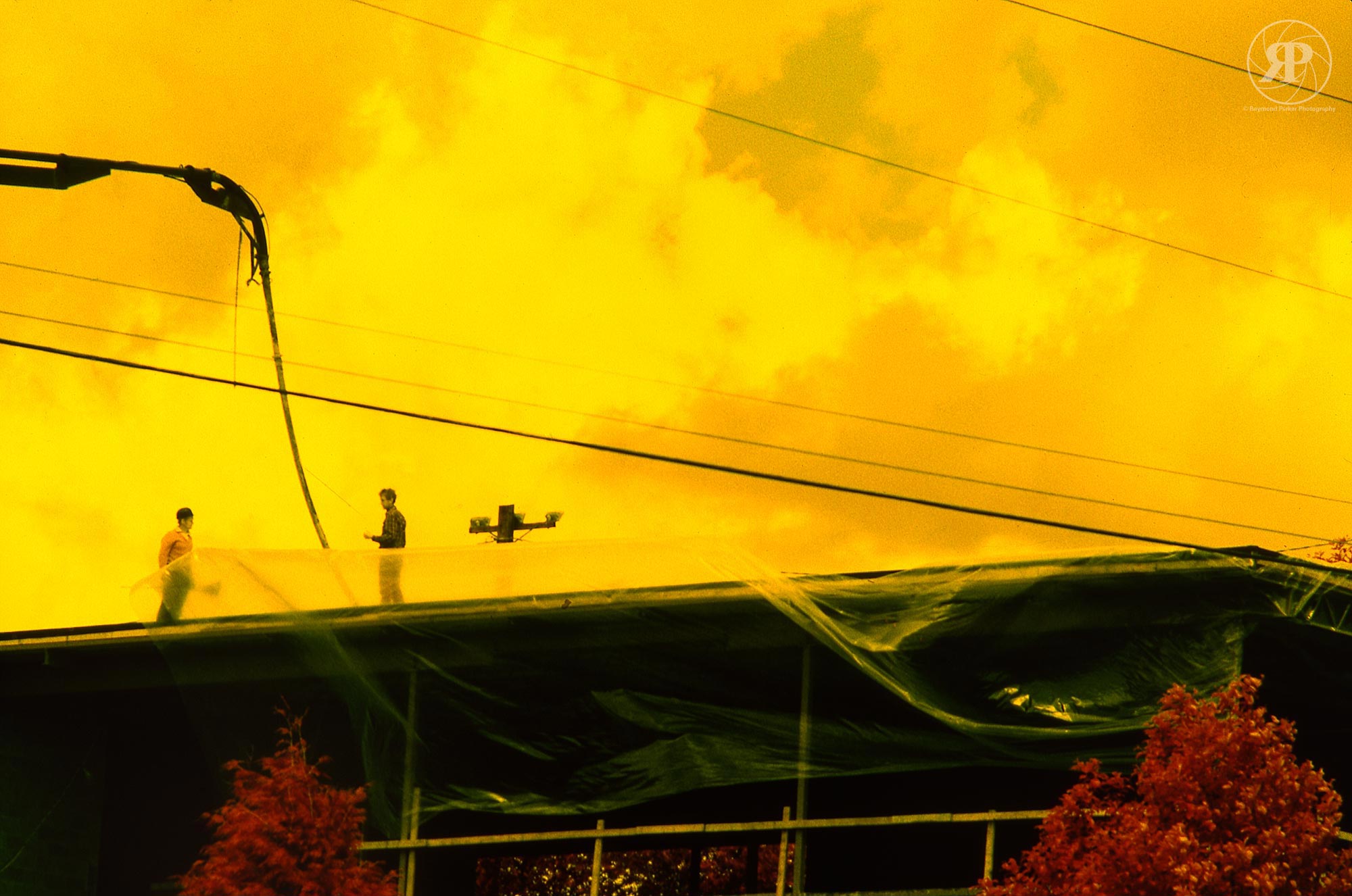Infrared photography fit the 60s psychedelic aesthetic, with photos from the red wavelength featured on Jimi Hendrix, Donovan, and Frank Zappa’s album covers.
click to enlarge
Cars
I’ve never been a car geek. Following a brief, pre-teen infatuation with the E-type Jaguar, cars have never drawn my eye or my money. Before 2012, I had spent much more on bicycles than automobiles, which I’d been known to dismiss as “motorized wheelchairs for voluntary invalids” — a bit judgy, I know.
I finally got a driver’s licence at 27 and my first car at 29. I always bought used and insured as needed. It took a speeding pickup truck object, that disabled me and my favourite bicycle in 2009, to justify the purchase of a new, very nice Volkswagen wheelchair, in 2012.
Heidi, with an almost infallible inbuilt knack for navigation, has retraced routes previously accomplished in the saddle — the first journey following my 1994 Three Borders Tour through southern Alaska, Yukon and the backbone of British Columbia.
So, I’ve always seen cars as mostly utilitarian rather than objects of desire and found it difficult in my youth and now, navigating conversations surrounding something imbued with so much social currency. That said, nothing contextualizes my vintage photographs (these circa 1980) better than the automobile.
Horses
Horses, like most animals large enough to injure a human, have always made me nervous. Not as nervous as “horseless carriages,” but nervous nonetheless. Sure, I’ve ridden one a couple of times and grappled with unruly pack horses in the mountains. My diamond hitch sucked enough that the beasts always managed to shuck their burdens.
On the aforementioned bike tour, I experienced a combination of my chrome molybdenum steed and its equine counterparts, chased on a remote BC road by a pack of wild horses. Still, horses are to be admired for their power and beauty. From a distance.
Workers
I’ve put in my share of manual labour over the years — carpenter, log builder, factory worker, not to mention recreational energy expenditure on the bike and in the mountains. I occasionally wonder about cumulative horse power expended (CHPE).
I believe there’s something noble and sadly unappreciated about manual labour. How often do we pause to appreciate the products of roughened hands: cathedrals and garrisons, homes and barns, theatres and hospitals, food? Ignoring aesthetic considerations for a moment, aren’t all these things worth not just financial investment but also our admiration?
Workers generally don’t make me nervous … unless, under our present circumstances, they’re crowded in remote work camps and travelling around between shifts.
Well, that’s it for today’s miscellaneous pictures and musings, in the red thermal spectrum. Keep safe. Always use a changing bag.

















